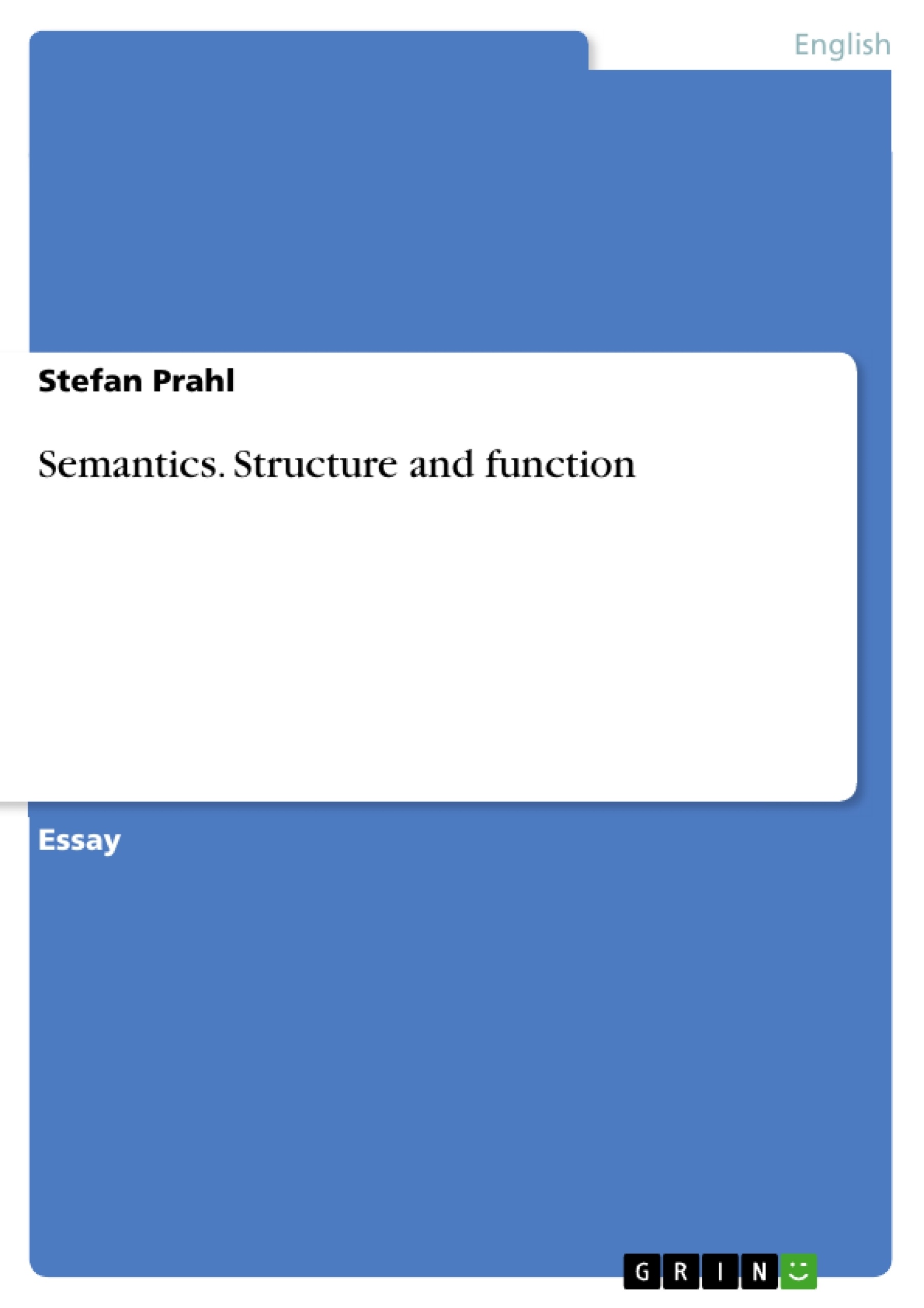Ray Jackendoff’s semantic theory presented in “Semantics and Cognition” proposes
that semantics is more than a field of linguistic studies; it studies the very nature of
thought and experience as well. In this essay, I will look at certain aspects of this theory
and compare them to more traditional approaches to semantics. It will become apparent
that Jackendoff’s theory, in the end of the day, is not only concerned with semantics but
with the whole area of cognition as well. [...]
Table of Contents
- The grammatical constraint, syntactic structure, and the compositionality of meaning representation
- Lexicalisation, the TRH, and the question of a “universal” syntactic representation
Objectives and Key Themes
This essay explores Ray Jackendoff's semantic theory as presented in "Semantics and Cognition," arguing that it transcends traditional linguistic boundaries to encompass the nature of thought and experience itself. The essay compares Jackendoff's approach to more conventional semantic frameworks, highlighting its broader focus on cognition.
- The nature of categorization and its relevance to word meaning
- The limitations of traditional approaches to categorization, such as the theory of necessary and sufficient conditions
- Jackendoff's preference rule system as an alternative model for understanding categorization
- The role of conceptual structures in Jackendoff's theory and their significance for cognitive processes
- The application of Jackendoff's preference rule system to real-world examples, including the vase/cup/bowl paradigm
Chapter Summaries
- This chapter begins by introducing the concept of categorization and its central role in semantic theory. It examines traditional approaches, such as the theory of necessary and sufficient conditions, and highlights their inadequacies in capturing the nuances of word meaning. The chapter then introduces the concept of dictionary and encyclopaedic information, providing examples to illustrate their distinction.
- This chapter presents a more detailed analysis of the problems associated with the theory of necessary and sufficient conditions, using the vase/cup/bowl paradigm as a case study. It demonstrates the limitations of this approach in handling ambiguous categorization. The chapter then explores the fuzzy set theory as a potential solution, but ultimately finds it lacking.
- This chapter introduces Jackendoff's preference rule system as an alternative to traditional approaches. It outlines the key elements of this system, including the distinction between [TOKEN] and [TYPE], the role of conceptual structures, and the concept of graded categorization. The chapter further elaborates on the five symptoms of the preference rule system, explaining how they contribute to a more nuanced understanding of categorization.
Keywords
This essay explores key concepts in semantics, specifically focusing on the nature of categorization and its impact on word meaning. The primary keywords include: categorization, necessary and sufficient conditions, fuzzy set theory, preference rule system, [TOKEN], [TYPE], conceptual structures, graded categorization, and family resemblance.
- Quote paper
- Stefan Prahl (Author), 2000, Semantics. Structure and function, Munich, GRIN Verlag, https://www.grin.com/document/6813



